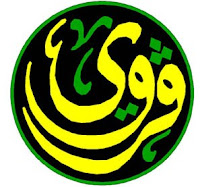22 November 2005
EXCLUSIVE: BUSH PLOT TO BOMB HIS ARAB ALLY

Madness of war memo
By Kevin Maguire And Andy Lines
PRESIDENT Bush planned to bomb Arab TV station al-Jazeera in friendly Qatar, a "Top Secret" No 10 memo reveals.
But he was talked out of it at a White House summit by Tony Blair, who said it would provoke a worldwide backlash.
A source said: "There's no doubt what Bush wanted, and no doubt Blair didn't want him to do it." Al-Jazeera is accused by the US of fuelling the Iraqi insurgency.
The attack would have led to a massacre of innocents on the territory of a key ally, enraged the Middle East and almost certainly have sparked bloody retaliation.
A source said last night: "The memo is explosive and hugely damaging to Bush.
"He made clear he wanted to bomb al-Jazeera in Qatar and elsewhere. Blair replied that would cause a big problem.
"There's no doubt what Bush wanted to do - and no doubt Blair didn't want him to do it."
A Government official suggested that the Bush threat had been "humorous, not serious".
But another source declared: "Bush was deadly serious, as was Blair. That much is absolutely clear from the language used by both men."
Yesterday former Labour Defence Minister Peter Kilfoyle challenged Downing Street to publish the five-page transcript of the two leaders' conversation. He said: "It's frightening to think that such a powerful man as Bush can propose such cavalier actions.
"I hope the Prime Minister insists this memo be published. It gives an insight into the mindset of those who were the architects of war."
Bush disclosed his plan to target al-Jazeera, a civilian station with a huge Mid-East following, at a White House face-to-face with Mr Blair on April 16 last year.
At the time, the US was launching an all-out assault on insurgents in the Iraqi town of Fallujah.
Al-Jazeera infuriated Washington and London by reporting from behind rebel lines and broadcasting pictures of dead soldiers, private contractors and Iraqi victims.
The station, watched by millions, has also been used by bin Laden and al-Qaeda to broadcast atrocities and to threaten the West.
Al-Jazeera's HQ is in the business district of Qatar's capital, Doha.
Its single-storey buildings would have made an easy target for bombers. As it is sited away from residential areas, and more than 10 miles from the US's desert base in Qatar, there would have been no danger of "collateral damage".
Dozens of al-Jazeera staff at the HQ are not, as many believe, Islamic fanatics. Instead, most are respected and highly trained technicians and journalists.
To have wiped them out would have been equivalent to bombing the BBC in London and the most spectacular foreign policy disaster since the Iraq War itself.
The No 10 memo now raises fresh doubts over US claims that previous attacks against al-Jazeera staff were military errors.
In 2001 the station's
Kabul office was knocked out by two "smart" bombs. In 2003, al-Jazeera reporter Tareq Ayyoub was killed in a
US missile strike on the station's
Baghdad centre.
The memo, which also included details of troop deployments, turned up in May last year at the Northampton constituency office of then Labour MP Tony Clarke
Cabinet Office civil servant David Keogh, 49, is accused under the Official Secrets Act of passing it to Leo O'Connor, 42, who used to work for Mr Clarke. Both are bailed to appear at Bow Street court next week.
Mr Clarke, who lost at the election, returned the memo to No 10.
He said Mr O'Connor had behaved "perfectly correctly".
Neither Mr O'Connor or Mr Keogh were available. No 10 did not comment.
AL-JAZEERA'S INSIDE STORY














.gif)




